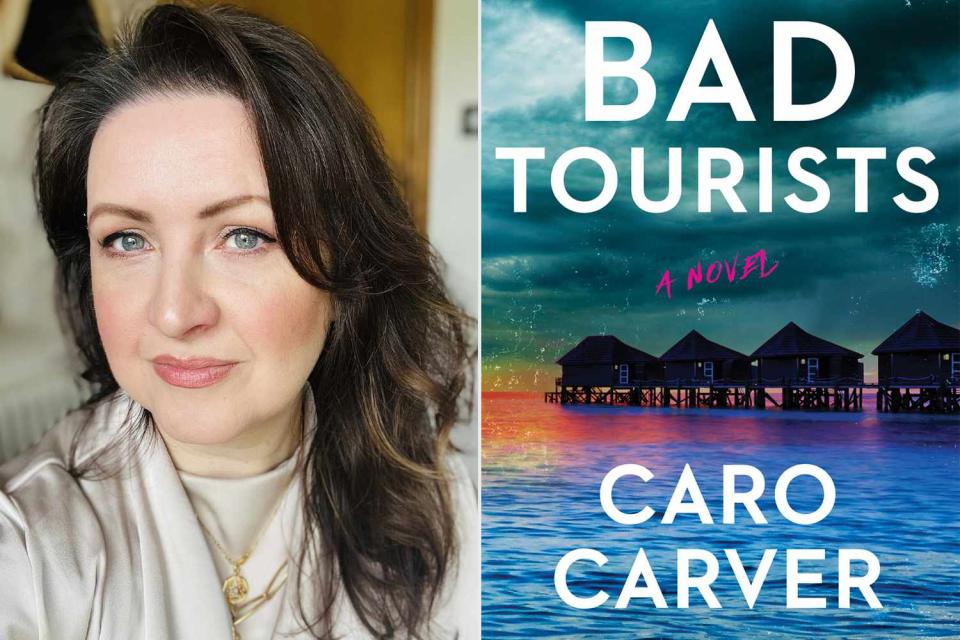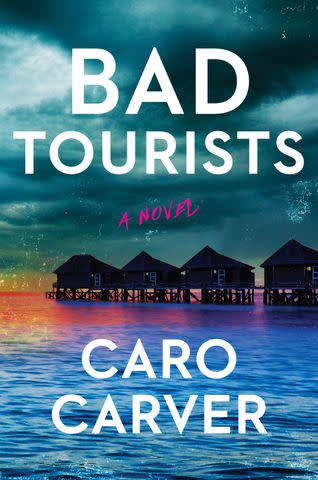'Women Have “Many” Things to Be Angry About' Why Female Rage Is Having a Moment (Exclusive)
A new novel, 'Bad Tourists,' imagines what a female psychopath disguised as the 'Ideal Mom' might look like

Jared Jess-Cooke, Avid Reader Press
Caro Carver and 'Bad Tourists'Female rage is having a moment in TV, film and TikTok, where you’ll find both a female rage edit and a female rage aesthetic. It’s having a moment in literature too, which suggests that we’re moving past representations of women as either whores or angels to more complex and dynamic female characters.
And women have many things to be angry about. Centuries of systemic oppression, under-funded healthcare, pay gaps and gender discrimination are just the tip of the iceberg.
Educated, successful women still come up against gender-based violence and discrimination, and we are done and ready to do something about it. That’s likely why we’re seeing more novels portray women who don’t play nice, like Oyinkan Braithwaite’s My Sister, the Serial Killer, Rachel Yoder’s Nightbitch, and Sayaka Murata’s Earthlings and women turning vigilante, like in Eliza Clark’s Boy Parts and Chelsea G. Summer’s A Certain Hunger, or fighting back as a group, as in Margaret Atwood’s The Handmaid’s Tale and Natsuo Korino’s Out.
Far from appearing in a single kind of novel, female rage pops up across genres, from romantasy and horror to historical fiction. Lauren Groff’s Matrix explores a little-known 12th-century poet, Marie de France; American Spy by Lauren Wilkinson examines Marie Mitchell, a Black female spy, and The Great Mrs. Elias by Barbara Chase-Riboud presents the robber baron Hannah Elias trying to survive in 19th century New York.
Rage in these stories is a clarifying power, burning a bright path so the next generation of women might enjoy the freedoms imagined in these tales.
Psychos and Perfect Moms

Avid Reader Press
'Bad Tourists'In my novel, Bad Tourists, Kate, Camilla and Darcy are friends in their forties who go to the Maldives to celebrate a divorce. Having been brought together by a trauma that ripped through their lives over 20 years ago, they are invested in finding a killer who turns up on the very same island where they are toasting new beginnings.
Kate, a ghostwriter, is not keen on the sun, but enjoys observing the other guests. For a new novel, she is researching psychopathy and learns that, while much is known about sociopathy, narcissism and psychopathy in men, we know next to nothing about how these disorders manifest in women.
Related: Sociopath Author Patric Gagne Says She Swiped Ringo Starr's Glasses. Could This 1977 Photo Be Proof?
I wanted to explore this lack of knowledge in Bad Tourists to imagine what a female psychopath might look like. It struck me that the construction of an Ideal Mom could be a female psychopath’s perfect disguise. It’s such a superficial façade, and no one imagines a mom might be boiling with fury, or itching to kill her next victim. She could literally hide in plain sight.
I also wanted to imagine a woman with complete autonomy. No mom guilt, not a single care about the many expectations imposed on her as a woman. Zero f---'s about the laundry. An exciting prospect!
The PEOPLE Puzzler crossword is here! How quickly can you solve it? Play now!
The women in Bad Tourists are tired: tired of the patriarchy, tired of being objectified because of their gender, tired that #MeToo lumbers on without radical change. I wrote these characters because I grew up surrounded by strong, badass women, heroes in my eyes, but whose lives were marked with prejudice.
My mom, for example, quit work when she was pregnant with me in 1978, and not because she wanted to. In Ireland, where I was born, it was illegal right up until 1974 for a married woman to be gainfully employed, and while the law had changed, society had not. I grew up knowing that certain opportunities hadn’t been available to the women who shaped me, and it drove me to stay on at high school – the first in my family not to leave at the age of 14 – and subsequently to go to college, where I got scholarships, graduated with a PhD and became a professor at the age of 26.
But I still found myself confronted with very similar limitations to those faced by my female forebears. Like so many other women, I found the concept of equality to be a fallacy when it came to getting promoted, managing childcare and accessing maternal healthcare.
Never miss a story — sign up for PEOPLE's free daily newsletter to stay up-to-date on the best of what PEOPLE has to offer , from celebrity news to compelling human interest stories.
As far back as Plato, women have been written as sexually broken, emotionally overwrought and biologically irrational. Literature that depicts women as murderously angry (see Lisa Taddeo’s Animal) or outright mad (such as Chelsea Bieker’s Madwoman) gives the finger to the angel-or-whore binary, and imagines people who identify as women reclaiming their autonomy to be whatever or whoever they want to be.
Powerlessness has pervaded female representation and reality since the year dot, but writing Bad Tourists made me think that Female Rage is about women claiming their power in their own terms, taking up space, claiming the autonomy, noise and privilege that has historically been granted to (and by) men, and – perhaps most crucial of all – writing women as perceived by women.
Steering the Narrative
Put another way, Female Rage is shorthand for women telling their own damn story. Yes, the women in Bad Tourists are tired, and angry and disenchanted, but they are fundamentally all about steering the narrative, using their own voice. Female Rage is about more than anger, and definitely more than an aesthetic. It’s a space of celebration, defiance, resilience and sisterhood.
There’s a moment in Bad Tourists when Kate decides to write her own novel, in secret. The book is a vehicle for confronting a terrible event that happened to her in her student days, one that has shaped her life. By putting words on the page, Kate is taking an important step towards narrating her past and her future.
To me, novels that portray badly behaved, “unladylike” women are the ones that seemed to show me another way of being, a signal to the reader that the book sees them. That the story is invested in truth, and agency.
I wrote Bad Tourists because I wanted certain women to feel seen, and for me, a reader feeling seen is the most important goal of all.
Bad Tourists comes out July 9 and is available for preorder now, wherever books are sold.
For more People news, make sure to sign up for our newsletter!
Read the original article on People.


